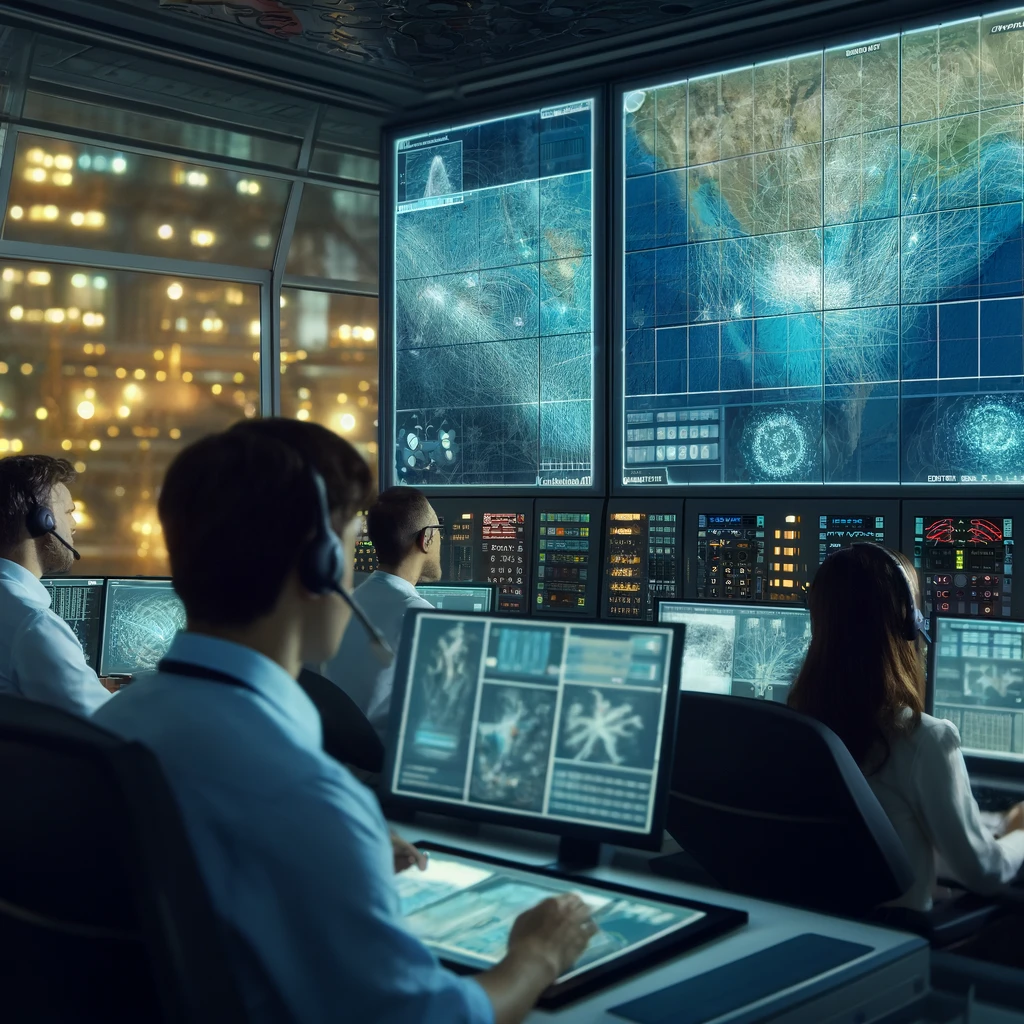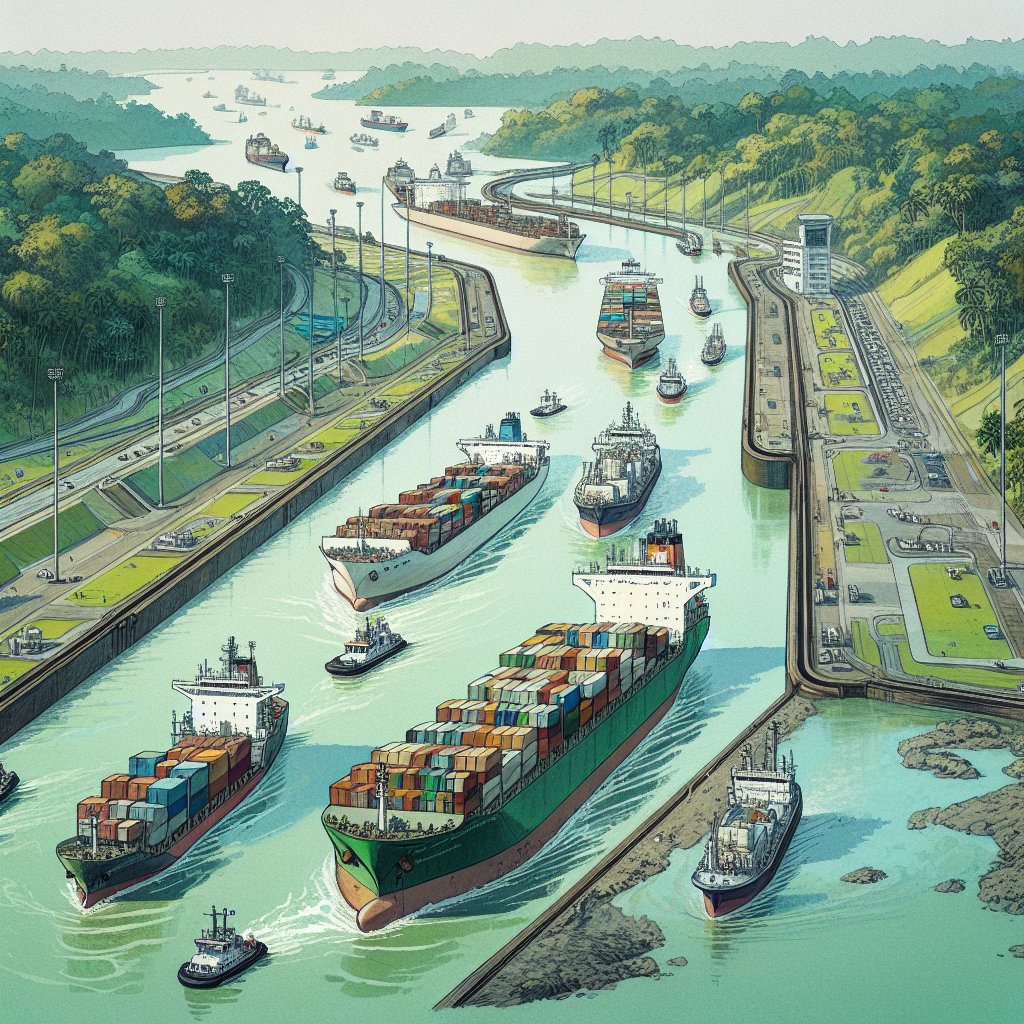India is joining the race to mine valuable minerals from the ocean floor. These minerals are important for renewable energy technologies. India already has two licenses to explore the deep sea in the Indian Ocean and has applied for two more. Other big countries like China and Russia are also competing for these minerals. The International Seabed Authority has given out 31 exploration licenses, and India wants to have as many as Russia and close to China.
India wants to explore polymetallic sulphides and cobalt-rich ferromanganese crusts in the Central Indian Ocean. The International Seabed Authority has some concerns about India’s applications, like another country claiming the same area. But India is determined to get these minerals from the ocean floor. The Indian Ocean has a lot of these minerals, so India wants to explore more.
China, Germany, and South Korea are also exploring the Indian Ocean for minerals. India tested its mining machine in 2022 and successfully collected minerals like manganese, cobalt, nickel, and copper. India wants to be a leader in deep-sea exploration and not fall behind China.
Some people think that land-based mining has problems and that deep-sea mining could also be harmful. Some countries want to stop or pause deep-sea mining because we don’t know enough about the ocean’s ecosystems.
The World Bank says that we need to extract five times more critical minerals by 2050 to meet the demand for clean energy. India wants to increase its renewable energy capacity by 2030 and get 50% of its energy from renewables. To do this, India needs to get these minerals from the ocean floor. Right now, only a few countries have control over these minerals, and this makes some people worried about China’s power.
To compete with China, the US and other western countries have started the Minerals Security Partnership. India is now a member of this group. India has also made an agreement with Russia to develop deep-sea mining technologies. The competition for these minerals is getting more intense because of tensions between countries and the need for clean energy.
Original news source: India in undersea race to mine world’s battery metal (BBC)
🎧 Listen:
Slow
Normal
Fast
📖 Vocabulary:
| 1 | renewable | Able to be used again or replaced naturally |
| 2 | exploration | The act of traveling through an area to learn about it |
| 3 | licenses | Official permissions to do something |
| 4 | polymetallic | Containing several different metals |
| 5 | seabed | The bottom of the sea |
| 6 | ecosystems | Communities of living organisms and their environments |
| 7 | critical | Extremely important or necessary |
| 8 | capacity | The maximum amount that something can contain or produce |
| 9 | minerals | Natural substances found in the earth that are valuable for making things |
| 10 | tensions | Feelings of anger and disagreement between people or groups |
| 11 | partnership | A formal agreement or relationship between two or more parties |
| 12 | technologies | The application of scientific knowledge for practical purposes, especially in industry |
| 13 | intense | Very strong or severe |
| 14 | cobalt | A hard, silver-gray metal used in making strong, corrosion-resistant alloys |
| 15 | manganese | A gray-white metallic element used in making steel and as a chemical catalyst |
Group or Classroom Activities
Warm-up Activities:
– News Summary
Instructions: In pairs or small groups, students will read the article and create a brief summary of the main points. They should focus on key information such as India’s exploration for minerals in the Indian Ocean, competition with other countries, concerns about deep-sea mining, and the need for clean energy.
– Opinion Poll
Instructions: Students will work in pairs or small groups and discuss their opinions on deep-sea mining. They should consider the environmental impact, the need for clean energy, and the competition between countries. After the discussion, each group will present their opinions to the class and conduct a poll to see which opinion is most common among the students.
– Vocabulary Pictionary
Instructions: Divide the class into two teams. Give each team a list of vocabulary words from the article (e.g. exploration, minerals, renewable energy, ecosystems). One student from each team will come to the front of the class and draw a picture to represent one word. The team members must guess the word based on the drawing. The team with the most correct guesses wins.
– Speed Summarizing
Instructions: In pairs, students will take turns summarizing the article in one minute or less. They should try to include the main points and key details. After each round, students can switch partners and summarize again, trying to improve their speed and accuracy.
– Future Predictions
Instructions: In pairs or small groups, students will discuss and make predictions about the future of deep-sea mining. They should consider the potential impact on the environment, the development of renewable energy technologies, and the competition between countries. Each group will present their predictions to the class and explain their reasoning.
🤔 Comprehension Questions:
1. Why is India joining the race to mine minerals from the ocean floor?
2. Which countries are competing with India for these minerals?
3. What concerns does the International Seabed Authority have about India’s applications?
4. What minerals does India want to explore in the Central Indian Ocean?
5. Which countries are also exploring the Indian Ocean for minerals?
6. What minerals did India successfully collect during its mining machine test in 2022?
7. Why do some people want to stop or pause deep-sea mining?
8. Why does India need to get minerals from the ocean floor to increase its renewable energy capacity?
Go to answers ⇩
🎧✍️ Listen and Fill in the Gaps:
India is joining the race to mine valuable (1)______ from the ocean floor. These minerals are important for renewable energy technologies. India already has two licenses to explore the deep sea in the Indian Ocean and has applied for two more. Other big countries like (2)______ and Russia are also competing for these minerals. The International Seabed Authority has given out 31 (3)______ licenses, and India wants to have as many as Russia and close to China.
India wants to explore (4)______ sulphides and cobalt-rich ferromanganese crusts in the (5)______ (6)______ Ocean. The International Seabed Authority has some concerns about India’s applications, like another (7)______ claiming the same area. But India is determined to get these minerals from the ocean floor. The Indian Ocean has a lot of these minerals, so India wants to explore more.
China, Germany, and South Korea are also (8)______ the Indian Ocean for minerals. India tested its mining machine in 2022 and successfully collected minerals like manganese, cobalt, nickel, and copper. India wants to be a leader in deep-sea exploration and not fall behind China.
Some people think that land-based mining has problems and that deep-sea mining could also be (9)______. Some countries want to stop or (10)______ deep-sea mining because we don’t know (11)______ about the ocean’s ecosystems.
The World Bank says that we need to extract five times more critical minerals by 2050 to meet the demand for clean energy. (12)______ wants to increase its renewable energy capacity by 2030 and get 50% of its energy from renewables. To do this, India needs to get these minerals from the (13)______ floor. Right now, only a few countries have control over these minerals, and this (14)______ some people worried about China’s power.
To compete with China, the US and other western countries have started the Minerals Security Partnership. India is now a (15)______ of this group. India has also made an agreement with Russia to develop deep-sea (16)______ technologies. The competition for these minerals is getting more intense because of tensions between countries and the need for clean energy.
Go to answers ⇩
💬 Discussion Questions:
Students can ask a partner these questions, or discuss them as a group.
1. What are valuable minerals and why are they important for renewable energy technologies?
2. How do you think India feels about joining the race to mine minerals from the ocean floor?
3. Do you think it’s a good idea for India to explore the Indian Ocean for minerals? Why or why not?
4. What do you think are some concerns the International Seabed Authority has about India’s applications?
5. How would you feel if another country claimed the same area as India for mining minerals? Why?
6. Do you think deep-sea mining could be harmful to the ocean’s ecosystems? Why or why not?
7. What are some problems with land-based mining that some people think deep-sea mining could also have?
8. Why do you think some countries want to stop or pause deep-sea mining?
9. What do you think it means to “extract five times more critical minerals by 2050”?
10. How do you think India feels about increasing its renewable energy capacity by 2030?
11. Why do you think India needs to get minerals from the ocean floor to achieve its renewable energy goals?
12. Do you think it’s a good idea for only a few countries to have control over these minerals? Why or why not?
13. How do you think India feels about China’s power in relation to these minerals?
14. What do you think the Minerals Security Partnership is and why do you think it was created?
15. How do you think tensions between countries are affecting the competition for these minerals?
Individual Activities
📖💭 Vocabulary Meanings:
Match each word to its meaning.
Words:
1. renewable
2. exploration
3. licenses
4. polymetallic
5. seabed
6. ecosystems
7. critical
8. capacity
9. minerals
10. tensions
11. partnership
12. technologies
13. intense
14. cobalt
15. manganese
Meanings:
(A) Natural substances found in the earth that are valuable for making things
(B) The bottom of the sea
(C) Able to be used again or replaced naturally
(D) Official permissions to do something
(E) Communities of living organisms and their environments
(F) A gray-white metallic element used in making steel and as a chemical catalyst
(G) A formal agreement or relationship between two or more parties
(H) Very strong or severe
(I) Containing several different metals
(J) Extremely important or necessary
(K) The application of scientific knowledge for practical purposes, especially in industry
(L) The act of traveling through an area to learn about it
(M) The maximum amount that something can contain or produce
(N) Feelings of anger and disagreement between people or groups
(O) A hard, silver-gray metal used in making strong, corrosion-resistant alloys
Go to answers ⇩
🔡 Multiple Choice Questions:
1. What is the purpose of India joining the race to mine minerals from the ocean floor?
(a) To obtain valuable minerals for renewable energy technologies
(b) To compete with China and Russia
(c) To explore the Indian Ocean
(d) To test their mining machine
2. How many licenses has India obtained to explore the deep sea in the Indian Ocean?
(a) Four
(b) Five
(c) Six
(d) Two
3. Which organization has given out exploration licenses for mining in the ocean?
(a) International Seabed Authority
(b) World Bank
(c) Minerals Security Partnership
(d) Indian Ocean Exploration Committee
4. What types of minerals does India want to explore in the Central Indian Ocean?
(a) Gold and silver
(b) Iron and coal
(c) Polymetallic sulphides and cobalt-rich ferromanganese crusts
(d) Uranium and platinum
5. Which countries are also exploring the Indian Ocean for minerals?
(a) Russia, France, and Australia
(b) Brazil, Canada, and Japan
(c) United States, United Kingdom, and Italy
(d) China, Germany, and South Korea
6. What concerns does the International Seabed Authority have about India’s applications?
(a) Lack of mining experience
(b) Another country claiming the same area
(c) Environmental impact of deep-sea mining
(d) Insufficient funding for exploration
7. Why do some people want to stop or pause deep-sea mining?
(a) Lack of demand for clean energy
(b) Concerns about the impact on the ocean’s ecosystems
(c) High cost of deep-sea mining
(d) Availability of alternative sources of minerals
8. Why does India want to obtain minerals from the ocean floor?
(a) To become a leader in deep-sea exploration
(b) To compete with China’s control over these minerals
(c) To increase its renewable energy capacity
(d) All of the above
Go to answers ⇩
🕵️ True or False Questions:
1. China and Russia are not competing for these minerals.
2. Some people are not concerned about the potential harm of deep-sea mining to the ocean’s ecosystems.
3. India wants to explore polymetallic sulphides and cobalt-rich ferromanganese crusts in the Central Indian Ocean.
4. India already has one license to explore the deep sea in the Indian Ocean and has applied for two more.
5. India is joining other countries in the race to mine valuable minerals from the ocean floor.
6. These minerals are not important for renewable energy technologies.
7. The International Seabed Authority has given out 31 exploration licenses, and India wants to have as many as Russia and close to China.
8. India wants to increase its renewable energy capacity by 2030 and get 50% of its energy from renewables.
Go to answers ⇩
📝 Write a Summary:
Write a summary of this news article in two sentences.
Check your writing now with the best free AI for English writing!
Writing Questions:
Answer the following questions. Write as much as you can for each answer.
Check your answers with our free English writing assistant!
1. What valuable minerals is India trying to mine from the ocean floor?
2. Which other countries are also competing for these minerals?
3. What concerns does the International Seabed Authority have about India’s applications?
4. Why do some people want to stop or pause deep-sea mining?
5. Why does India need these minerals from the ocean floor?
✅ Answers
🤔✅ Comprehension Question Answers:
1. Why is India joining the race to mine minerals from the ocean floor?
India wants to mine minerals from the ocean floor because these minerals are important for renewable energy technologies. They are needed to meet the demand for clean energy.
2. Which countries are competing with India for these minerals?
China, Russia, Germany, and South Korea are competing with India for these minerals.
3. What concerns does the International Seabed Authority have about India’s applications?
The International Seabed Authority has concerns about India’s applications because there is a possibility of another country claiming the same area for mining.
4. What minerals does India want to explore in the Central Indian Ocean?
India wants to explore polymetallic sulphides and cobalt-rich ferromanganese crusts in the Central Indian Ocean.
5. Which countries are also exploring the Indian Ocean for minerals?
China, Germany, and South Korea are also exploring the Indian Ocean for minerals.
6. What minerals did India successfully collect during its mining machine test in 2022?
During its mining machine test in 2022, India successfully collected minerals like manganese, cobalt, nickel, and copper.
7. Why do some people want to stop or pause deep-sea mining?
Some people want to stop or pause deep-sea mining because there are concerns about the potential harm it could cause to the ocean’s ecosystems.
8. Why does India need to get minerals from the ocean floor to increase its renewable energy capacity?
India needs to get minerals from the ocean floor to increase its renewable energy capacity because these minerals are essential for renewable energy technologies. They are needed to meet the demand for clean energy and achieve India’s goal of getting 50% of its energy from renewables by 2030.
Go back to questions ⇧
🎧✍️✅ Listen and Fill in the Gaps Answers:
(1) minerals
(2) China
(3) exploration
(4) polymetallic
(5) Central
(6) Indian
(7) country
(8) exploring
(9) harmful
(10) pause
(11) enough
(12) India
(13) ocean
(14) makes
(15) member
(16) mining
Go back to questions ⇧
📖💭✅ Vocabulary Meanings Answers:
1. renewable
Answer: (C) Able to be used again or replaced naturally
2. exploration
Answer: (L) The act of traveling through an area to learn about it
3. licenses
Answer: (D) Official permissions to do something
4. polymetallic
Answer: (I) Containing several different metals
5. seabed
Answer: (B) The bottom of the sea
6. ecosystems
Answer: (E) Communities of living organisms and their environments
7. critical
Answer: (J) Extremely important or necessary
8. capacity
Answer: (M) The maximum amount that something can contain or produce
9. minerals
Answer: (A) Natural substances found in the earth that are valuable for making things
10. tensions
Answer: (N) Feelings of anger and disagreement between people or groups
11. partnership
Answer: (G) A formal agreement or relationship between two or more parties
12. technologies
Answer: (K) The application of scientific knowledge for practical purposes, especially in industry
13. intense
Answer: (H) Very strong or severe
14. cobalt
Answer: (O) A hard, silver-gray metal used in making strong, corrosion-resistant alloys
15. manganese
Answer: (F) A gray-white metallic element used in making steel and as a chemical catalyst
Go back to questions ⇧
🔡✅ Multiple Choice Answers:
1. What is the purpose of India joining the race to mine minerals from the ocean floor?
Answer: (a) To obtain valuable minerals for renewable energy technologies
2. How many licenses has India obtained to explore the deep sea in the Indian Ocean?
Answer: (d) Two
3. Which organization has given out exploration licenses for mining in the ocean?
Answer: (a) International Seabed Authority
4. What types of minerals does India want to explore in the Central Indian Ocean?
Answer: (c) Polymetallic sulphides and cobalt-rich ferromanganese crusts
5. Which countries are also exploring the Indian Ocean for minerals?
Answer: (d) China, Germany, and South Korea
6. What concerns does the International Seabed Authority have about India’s applications?
Answer: (b) Another country claiming the same area
7. Why do some people want to stop or pause deep-sea mining?
Answer: (b) Concerns about the impact on the ocean’s ecosystems
8. Why does India want to obtain minerals from the ocean floor?
Answer: (c) To increase its renewable energy capacity
Go back to questions ⇧
🕵️✅ True or False Answers:
1. China and Russia are not competing for these minerals. (Answer: False)
2. Some people are not concerned about the potential harm of deep-sea mining to the ocean’s ecosystems. (Answer: False)
3. India wants to explore polymetallic sulphides and cobalt-rich ferromanganese crusts in the Central Indian Ocean. (Answer: True)
4. India already has one license to explore the deep sea in the Indian Ocean and has applied for two more. (Answer: False)
5. India is joining other countries in the race to mine valuable minerals from the ocean floor. (Answer: True)
6. These minerals are not important for renewable energy technologies. (Answer: False)
7. The International Seabed Authority has given out 31 exploration licenses, and India wants to have as many as Russia and close to China. (Answer: True)
8. India wants to increase its renewable energy capacity by 2030 and get 50% of its energy from renewables. (Answer: True)
Go back to questions ⇧













